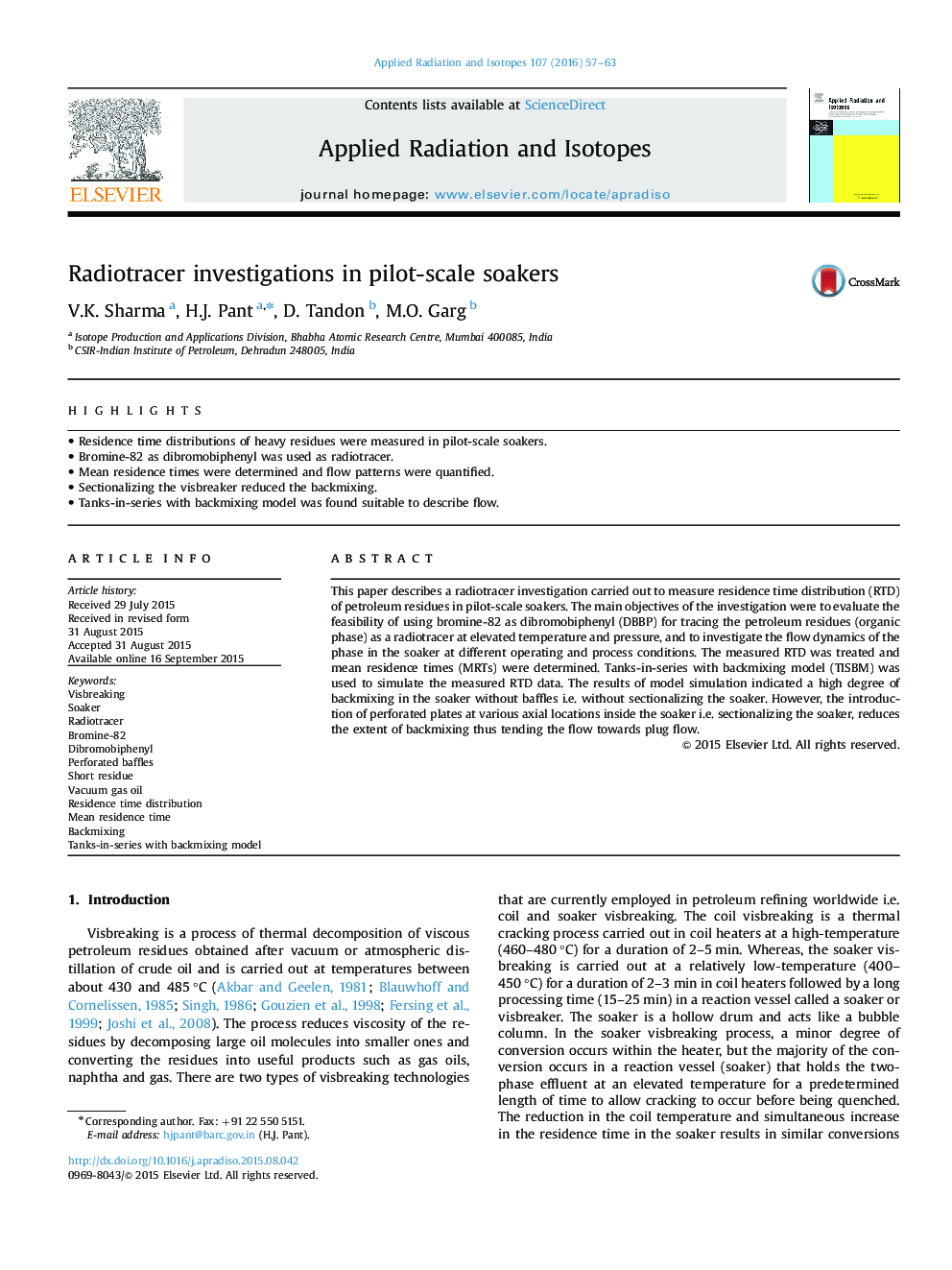| Article ID | Journal | Published Year | Pages | File Type |
|---|---|---|---|---|
| 1875681 | Applied Radiation and Isotopes | 2016 | 7 Pages |
•Residence time distributions of heavy residues were measured in pilot-scale soakers.•Bromine-82 as dibromobiphenyl was used as radiotracer.•Mean residence times were determined and flow patterns were quantified.•Sectionalizing the visbreaker reduced the backmixing.•Tanks-in-series with backmixing model was found suitable to describe flow.
This paper describes a radiotracer investigation carried out to measure residence time distribution (RTD) of petroleum residues in pilot-scale soakers. The main objectives of the investigation were to evaluate the feasibility of using bromine-82 as dibromobiphenyl (DBBP) for tracing the petroleum residues (organic phase) as a radiotracer at elevated temperature and pressure, and to investigate the flow dynamics of the phase in the soaker at different operating and process conditions. The measured RTD was treated and mean residence times (MRTs) were determined. Tanks-in-series with backmixing model (TISBM) was used to simulate the measured RTD data. The results of model simulation indicated a high degree of backmixing in the soaker without baffles i.e. without sectionalizing the soaker. However, the introduction of perforated plates at various axial locations inside the soaker i.e. sectionalizing the soaker, reduces the extent of backmixing thus tending the flow towards plug flow.
